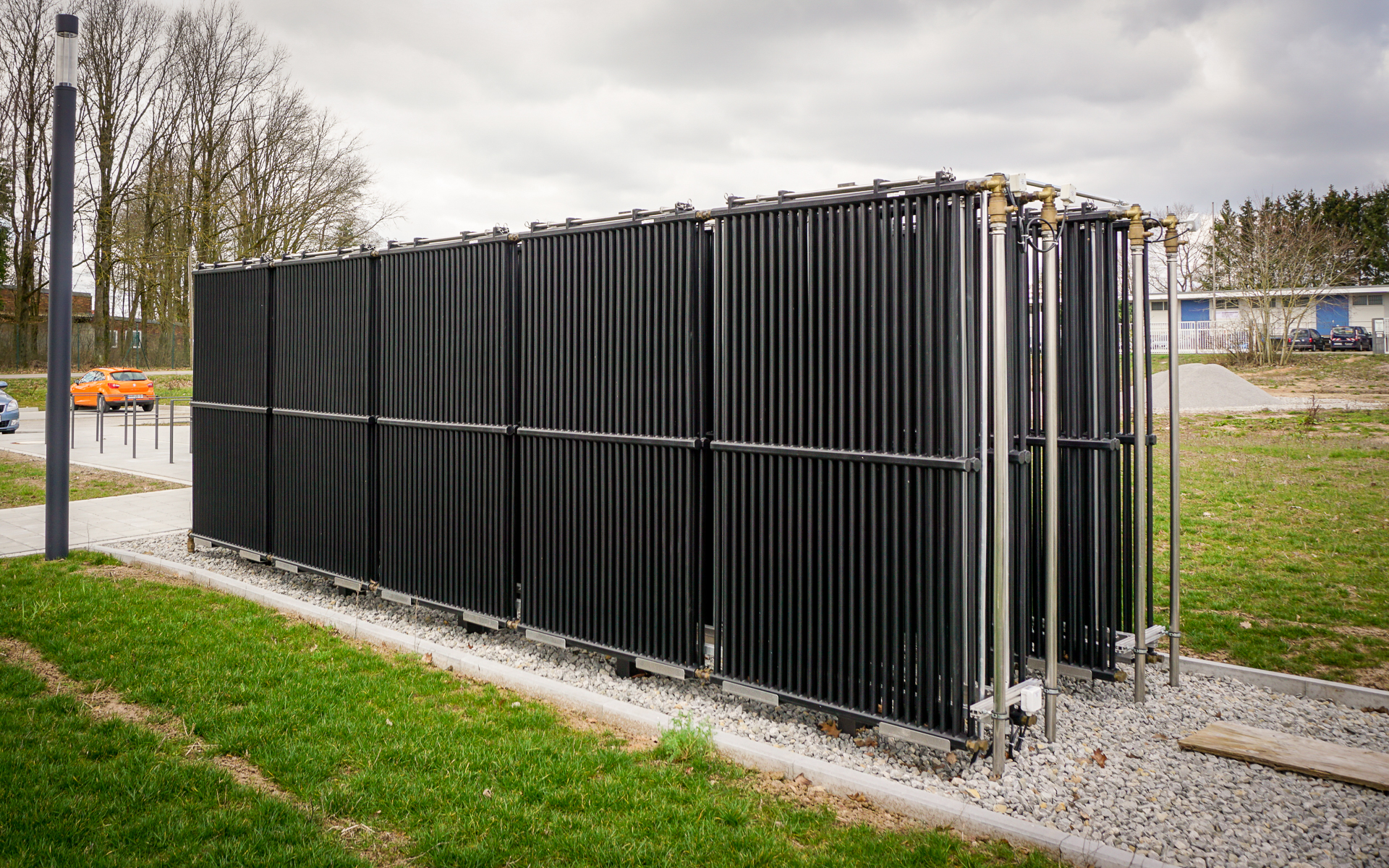Sustainable use of leftovers through upcycling
Automatic pool heater made from dismantled solar air absorber and used PV module.
Upcycling – this is the term used to describe a form of creative reuse of worn-out or seemingly useless materials as more functional or higher-quality products that add value to the original material.
Prof. Dr. Mathias Moog teaches the two modules Building Automation and Building Control Systems in the Sustainable Engineering course and Optimization of Energy Systems in the Smart Energy Systems course at the Feuchtwangen campus of Ansbach University of Applied Sciences. He also supervises the Smart Home Laboratory at the Feuchtwangen Campus.
He also follows his professional passion during the time off from lectures. Now a very special summer project has emerged:
“As part of the construction work at the Feuchtwangen campus, part of the existing heating system had to be removed because it was in the way of the new building. The removed solar air absorbers were actually supposed to be disposed of, but some were saved from the scrap container” says Professor Moog.

One of these air absorbers has now found a new use. The black absorber continues to heat water, but now no longer for heating the research building at the Feuchtwangen campus, but for a garden pool.
A clever combination of the salvaged solar-air absorber and a circulation pump, connected to a photovoltaic module that was also used, has resulted in a pool heater that uses only renewable energy.
“The photovoltaic module supplies the circulation pump with the necessary electricity when the sun is shining, to pump the water through the element of the energy fence and heat it inside for the pool” explains the builder and further:
“This results in a useful synergy effect: there is no need for complex and expensive control from the outside, because as soon as the sun shines, the pump starts up all by itself due to the automatically starting solar power supply, while the sun also heats the water in the absorber. The flow through the air absorber thus automatically adjusts to the solar radiation.”

